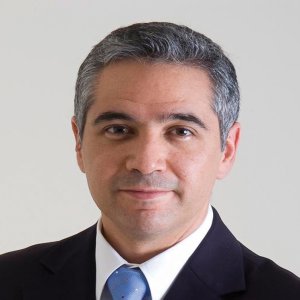Global Tire Leader Aims for NAFTA Region Supremacy

STORY INLINE POST
Q: How do your R&D capabilities in Mexico tie in to your global R&D activities?
A: Technology has always been one of the drivers of Pirelli’s success, and our products have benefited the market through innovation for decades. Our roots have always been in rubber products and working out how to optimize them, an area in which we continue to invest heavily. For the startup of a new facility like Silao, we have to bring in engineers from abroad to get it swiftly up and running, while also hiring local engineers. Many of the engineers we have hired in Mexico have been sent for training to Europe to get a real understanding of the Pirelli way of working. When they return, their skill level makes them an integral part of the team. In the long-term, our goal is to continue growing the knowledge base of our Mexican R&D group and fill it with local talent. Our global R&D center is in Milan but our satellite R&D centers around the world play a critical role in supporting it. As we move forward in supplying major OEMs in Mexico, we are also agreeing to supply locally, which requires local R&D. This has become a huge area of importance to us. We are focusing our R&D in Mexico on “Green Performance”, which is our strategy to combine ecofriendly aspects with tire performance and safety.
Q: What is your approach to capturing consumer interest in a market where your competition is already strong?
A: Capturing and holding on to our customer base among OEMs is about creating long-term relationships, but also about helping them to improve their cars. We have technology that makes the cars handle better, brake better, and achieve better fuel economy. In the premium segment we are very good at fine-tuning the product to the car. These are very sophisticated vehicles that we can add value to. We also enjoy a very good brand perception amongst our consumer base. There really is a short list of tires that add value and really give an extra edge. This is almost taken for granted now as speed-rated tires, H-rated and V-rated tires, and low-profile tires were all invented by Pirelli. Some of the early work we did with Ferrari involved creating tires that were unheard of, such as the 17-inch tire. That type of evolution continues within Pirelli today and really helps us capture that consumer interest. Pirelli gets involved at a very early stage of the design process. We know that every car being made today will either be changed or discontinued at some point, so we get to know early on when this is going to happen. We actively pursue vehicles that we believe we can add value to, and we had agreements to supply tires to OEMs before the ground was even broken for our plant in Silao.
Q: How will Mexico rival Brazil in supplying the NAFTA region, and what position will Mexico have in Pirelli’s global strategy?
A: Pirelli’s global strategy has seen us focus on local production for local consumption. The NAFTA region presents a critical growth opportunity for Pirelli. We are the market leaders in Latin America where we have been for over 100 years, but we are not the leaders in the NAFTA region. In order to reach our growth ambitions for the premium segment, which is where we add the greatest value, we decided that we needed to have an additional manufacturing plant in the region. We chose Mexico as the base for this plant for many reasons including location, growth opportunities, education, and demographics. The technologies we are using in Silao are highly flexible, which is essential for the premium market, and means we can produce many different types of tires in an efficient way. Some of the equipment is standard within the tire industry and purchased from our suppliers, while other equipment is uniquely built and installed by Pirelli. Our technology is a combination of machine-based processes and human intervention that allows us to build high-performance but flexible equipment. Furthermore, our investment in Mexico gives us a three-day supply line instead of a five to six week supply line, so we can be much more reactive to the local marketplace. We also have our own R&D center within the plant to create product lines that specifically address the needs of the North American market, including all-season tires.
We used to import 90% of what we sold in the NAFTA region from outside, and many of the tires we sell today in Mexico are produced in Latin America and imported. We have been doing that longer than most tire companies have been in existence. But in a couple of years from now, it will be a very different story. Our center will be full of Mexican engineers and we will manufacture product lines developed specifically here for this market.



















